Chop YAM on telling stories using denim
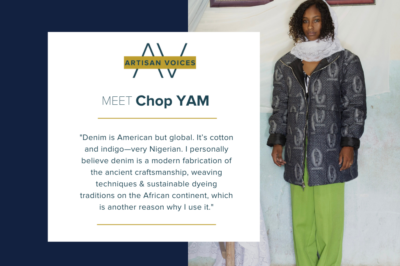
Melody Willis, owner of the Chicago-based denim and outerwear brand Chop YAM (@chop.yam), is reimagining and redesigning the classic puffer coat using the denim textile. Dedicated to innovation, functionality, and craftsmanship, Melody took the leap and officially launched Chop YAM in 2020 after years of perfecting the fit of her signature denim puffer coat.
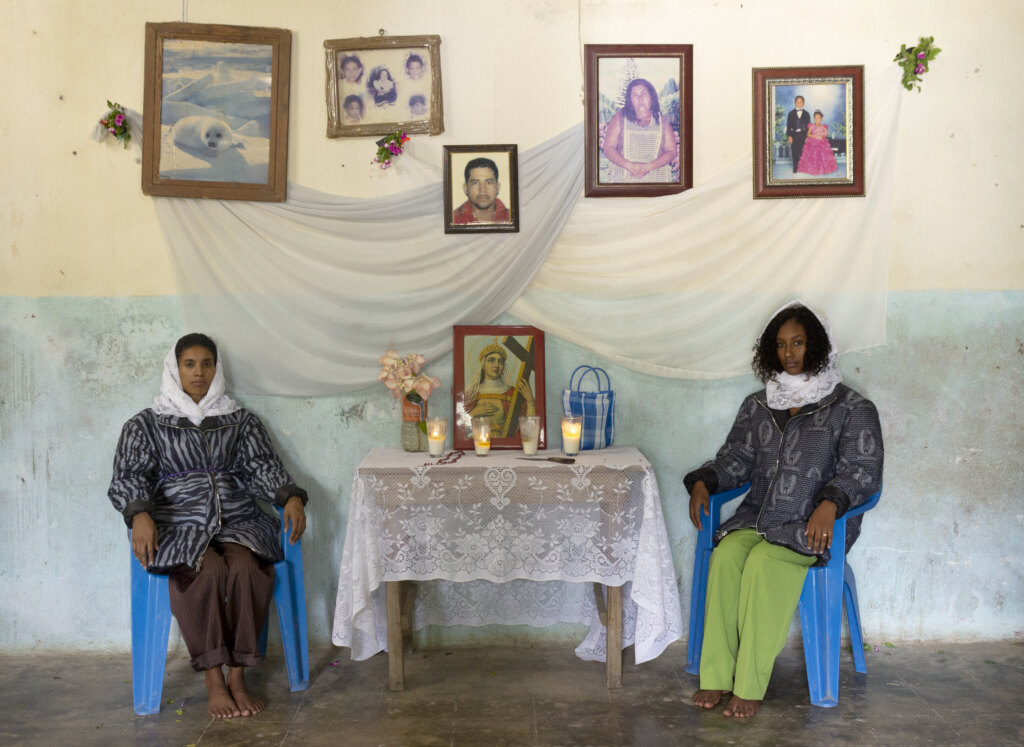 The daughter of a Nigerian mother from Onicha-Ugbo, Delta State and an American father from St. Louis, MO, she had a peripatetic upbringing spent in America, Nigeria, and South Africa. From an early age, her parents taught her about African and Black history and the importance of representation and cultural preservation, which laid the foundation for Chop YAM. Inspired by her Nigerian-American roots and the history of denim, the brand merges the colors, textures, and languages reminiscent of the many places and cultures that have shaped and fueled her creativity.
The daughter of a Nigerian mother from Onicha-Ugbo, Delta State and an American father from St. Louis, MO, she had a peripatetic upbringing spent in America, Nigeria, and South Africa. From an early age, her parents taught her about African and Black history and the importance of representation and cultural preservation, which laid the foundation for Chop YAM. Inspired by her Nigerian-American roots and the history of denim, the brand merges the colors, textures, and languages reminiscent of the many places and cultures that have shaped and fueled her creativity.
Denim was the fabric of her childhood. She started experimenting with denim in boarding school, drawing on her denim jeans in class and distressing them with rocks. As an early teen, her favorite pair of shoes were a pair of ‘Spice Girls’ denim platform sneakers. Growing up, her mother had a penchant for designing and working with local tailors to create custom looks. Melody’s fondest memory of this is when her mother designed an Àdìrẹ outfit for her to wear to a wedding. Her early experiments with denim and exposure to Àdìre– indigo-dyed cotton cloth, traditionally made by the Yoruba tribe in Nigeria—solidified her decision to explore this global fabric later on in fashion school.
“Denim has so much character and each individual gets to create their own unique story via wear and tear.” – Melody
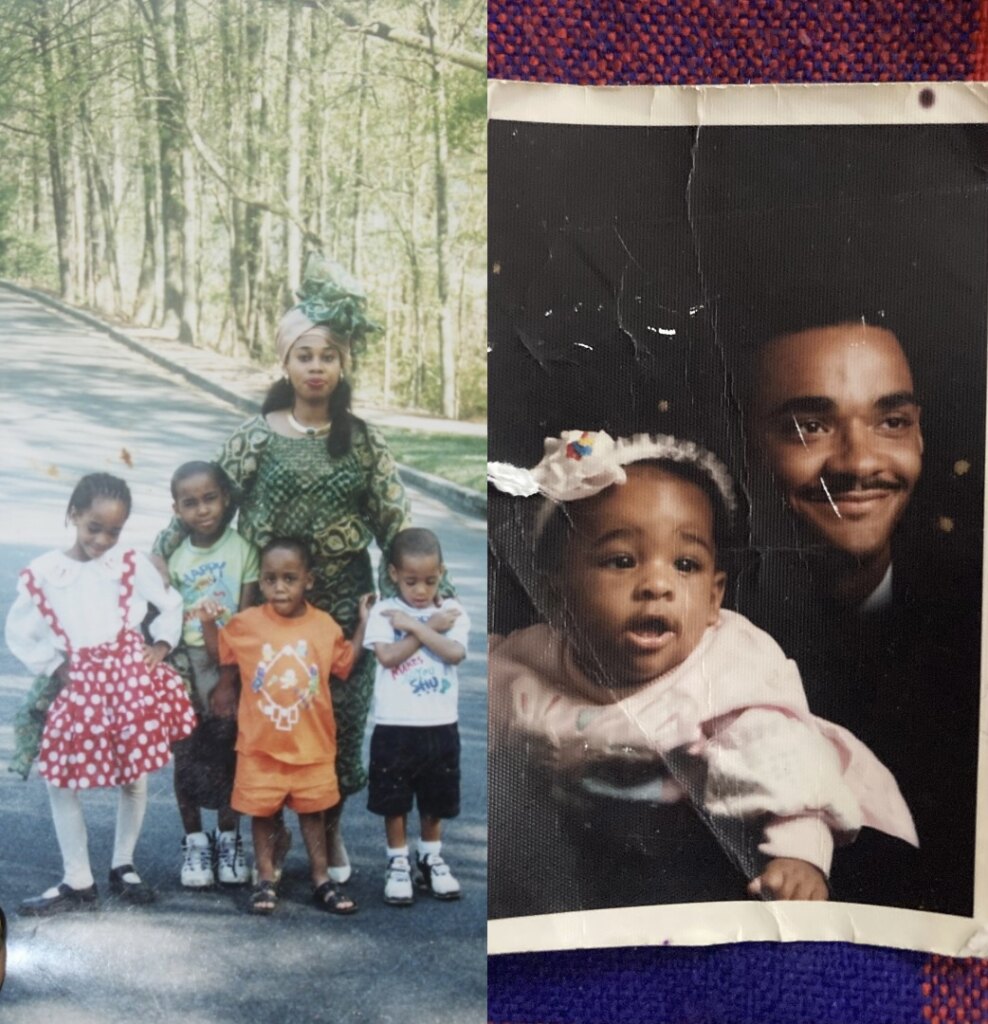
Melody’s earliest memories involve food and fashion, whether it was Afro-fusion recipes from her mother’s cookbook published in the late 90s or cutting up her school sandals to create mules. The merging of both mediums is reflected in the names of some of her outerwear pieces. The ‘Milo’ green denim puffer coat from her Fall/Winter 2019 collection was inspired by Milo, a chocolate drink that’s popular in Nigeria. Her brand name also draws inspiration from the food world.
“Chop means ‘to eat’ in Nigerian Pidgin/ broken English and yam is a staple food eaten in Nigeria and revered amongst the Igbo tribe. Here in America, yam is a sweet potato but also slang for buttocks, legs, etc.
Chop YAM is a food-inspired way of inviting you to consume and experience the brand. Taking a multi-sensory approach, Chop YAM is an invitation to come & get a proverbial taste of Nigerian-American heritage; a call to experience an all-encompassing level of heritage informed fashion.” – Melody
Below, Melody talks about the intersection of food and fashion, her design process, YANGA collection, and her obsession with denim.
![]()
FOOD & FASHION
Self-expression & identity are two words that come to mind when I think about the intersection of food and fashion. I also think about how guiding principles such as using the best ingredients or materials, taking your time, etc. translate into how I design for Chop YAM.
The creative process behind both mediums usually involve inspiration, creativity, innovation, history, experimentation, tools—whether it’s fabric or ingredients and continuous reworking. Fashion for the most part is about the tangible processed through tactile sensations; it’s about visuals & so when I use food references or allude to a food that allows for intimate connections with nostalgia, I’m pretty much just creating another way to sensorially experience fashion. I feel like when you can evoke a feeling, memory, thought or image that most people, if not everyone can relate to, I think there’s value in that, too. In my personal opinion, the only other thing capable of doing this is music.
Melody’s Yam Balls recipe | 🎵 listen to Melody’s playlist
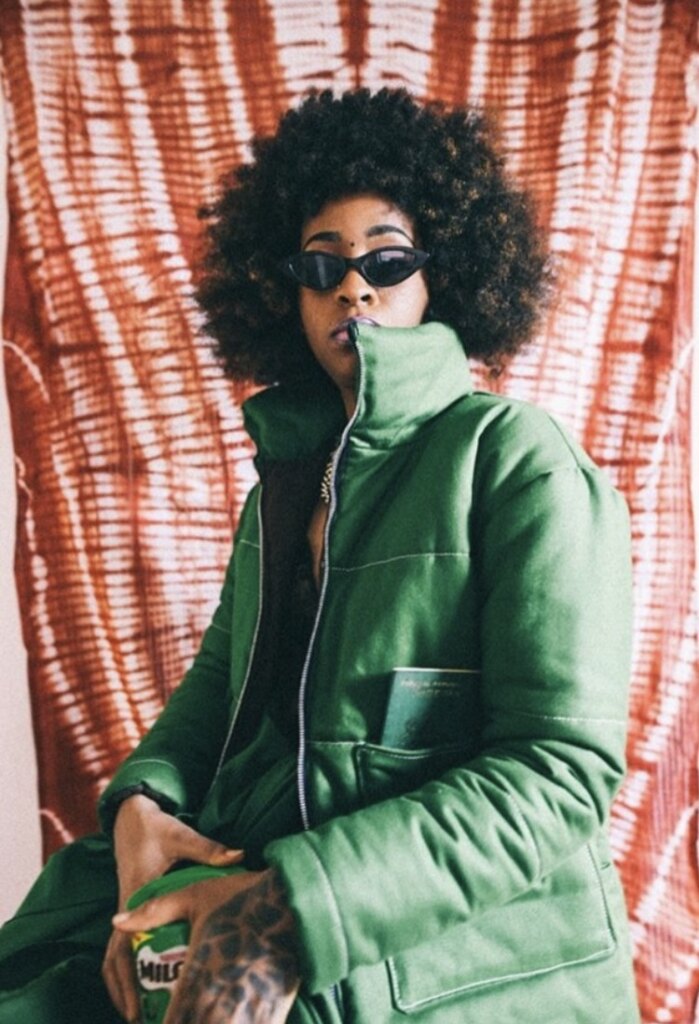
PROCESS: THE MAKING OF A CHOP YAM PUFFER
Research is paramount in our design process. Nothing gets designed or made without it. It makes the design details that much more dope because we’re drawing inspiration from what we’ve learned coupled with our creative influences. We get to use our medium-denim to create fun & interesting fabric stories that get turned into puffer coats & outerwear staples.
For the YANGA Fall/Winter 2022 collection, we did a ton of research and that’s how we found out that Afro-Mexicans use okra to make coffee. We gave complimentary bags of this okra coffee to the people that purchased a denim puffer from the collection.
All denim puffer samples are made locally here in Chicago. In 2021, for the first time, we did small batch production in Lagos, Nigeria because it became tedious making our denim puffers to order. All of our denim ponchos are still cut and sewn by me.
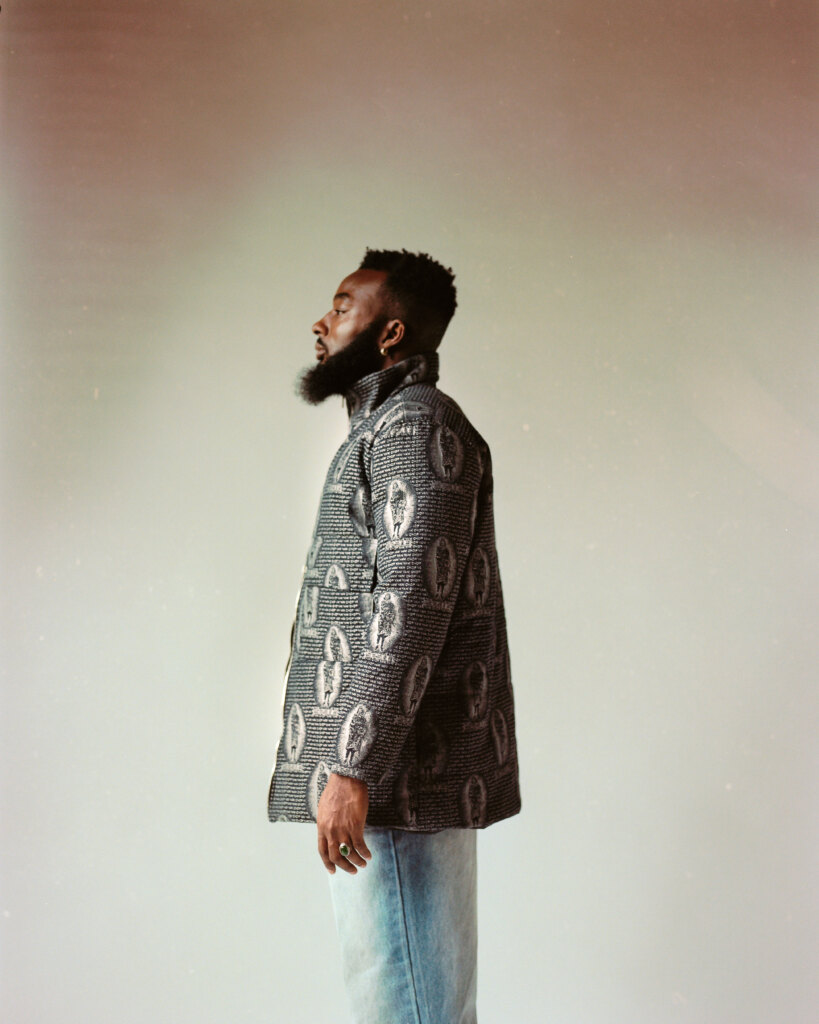
Craftsmanship is one of my favorite things, and I’m very thankful to have multiple points of reference for exceptional design in my dual heritage. To me, craftsmanship is great design, beauty, attention to detail, great fit, functionality & use of quality materials (durability). All of which are fundamental to the work we do at Chop YAM. To me, craftsmanship is caring about who’s gonna wear our denim puffers, denim ponchos, truckers jackets, denim totes, etc & approaching the design process with this in mind, we make it our business to add those small details that’ll make our denim garments an experience.
This is what it means to Chop YAM.
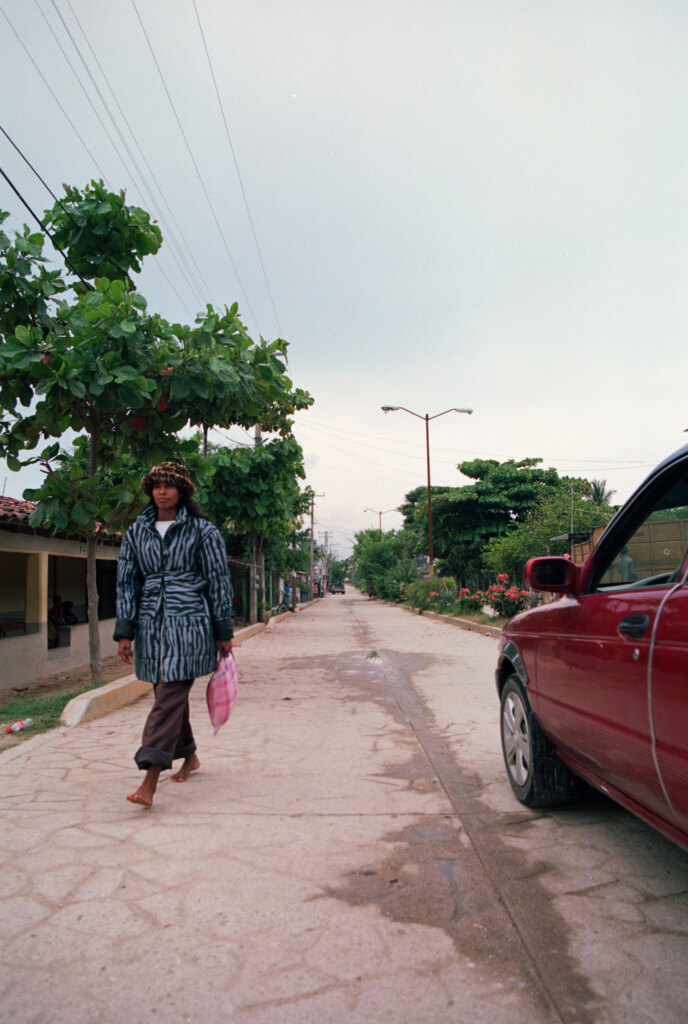
YANGA – THE COLLECTION
My favorite collection, YANGA, takes inspiration from Afro-Mexicans who have been historically marginalized. The goal was to amplify their voices and create awareness about their struggles navigating Mexico as Afro descendants using visuals and my medium—denim.
I designed a jacquard denim for the 2 piece denim puffer collection. Inspiration for the jacquard denim imagery was drawn from African commemorative cloth, ‘our Lady of Guadalupe,’ and the Raramuri people.
When naming the collection, I used language as a way to pay homage to one of their heroes & incorporate an element of Nigerian culture. Yanga is a Nigerian pidgin English phrase meaning to show off—and depending on context, can be a positive or negative thing. It also refers to Gaspar Yanga, who is considered the Nat Turner of Mexico. Africans who escaped captivity formed communities across Mexico known as maroon colonies or ‘Palenques’, the Spanish word for settlements of the enslaved. Yanga established the most famous maroon colony in Mexico and the first community of free blacks in the Americas in 1570.
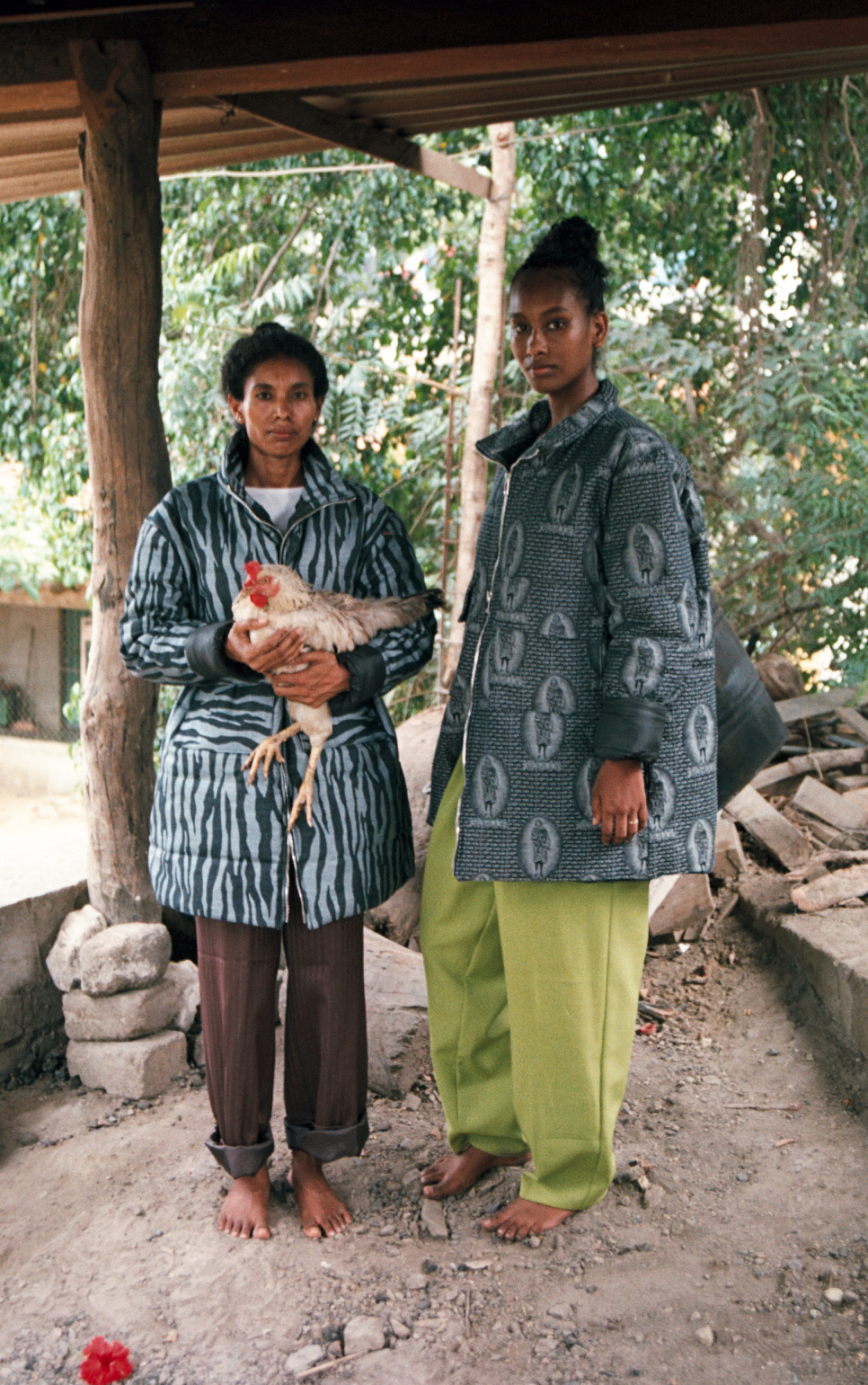
OUR MATERIALS
We use denim for its historical and cultural significance. Denim is American but global. It’s cotton and indigo—very Nigerian. I personally believe denim is a modern fabrication of the ancient craftsmanship, weaving techniques & sustainable dyeing traditions on the African continent which is another reason why I use it.
We have cotton. We were cultivating modern & rare, naturally colored cotton way before the atrocities of slavery. It’s worth mentioning that Momotaro jeans based in Japan, uses long staple cotton from Zimbabwe, Africa. No Zimbabwe, No Momotaro. Benzak, a denim brand based in Amsterdam, did a limited edition jeans collaboration with Japan Blue using hand picked cotton from Cote D’Ivoire, Africa.
We have the cloth weaving traditions & techniques. In Nigeria, we have aso-oke, akwete, akwa ocha which is only done by the Anioma people of Delta State, where my mom is from. We even have Ikat weaving called Ito Woji which is done by the Igarra people of Edo state.
We have indigo. In Nigeria alone, we have Adire indigo dyeing done by the Yorubas, we have Ukara indigo dyeing done by Igbos and we have indigo dyeing done by the Hausas at the oldest indigo dye pits in Africa. The same natural indigo dye pits where our denim tote bags were dyed. Our expertise and knowledge of indigo cultivation was taken to America & was responsible for most of South Carolina’s indigo production in the 18th century.
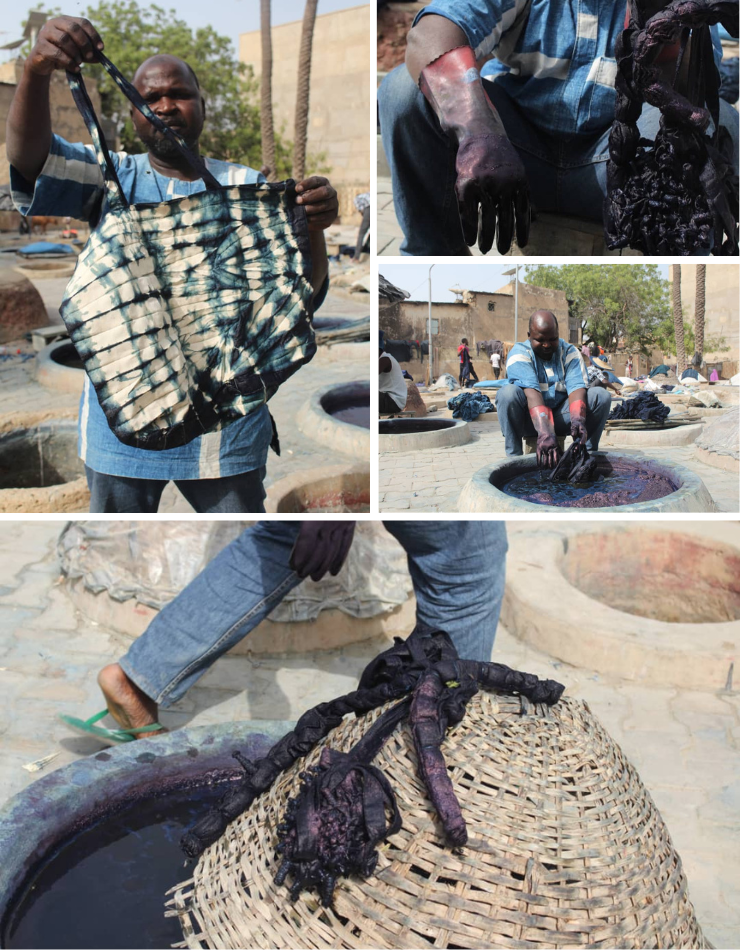
The denim industry is connected & will forever be connected to slavery. It will forever be connected to Black Americans & the history of the African Diaspora because of the two commodities essential for making denim & blue jeans—cotton & indigo.
Denim was also used as the cloth of resistance during the Civil Rights movement & so we at Chop YAM are exactly where we need to be.

To learn more about Chop YAM, check out the links below.
All photos courtesy of Chop YAM.
The Artisan Voices blog explores the histories, experiences, pivotal moments, and innovative initiatives in an artisan or maker business while celebrating craft, community, and culture.